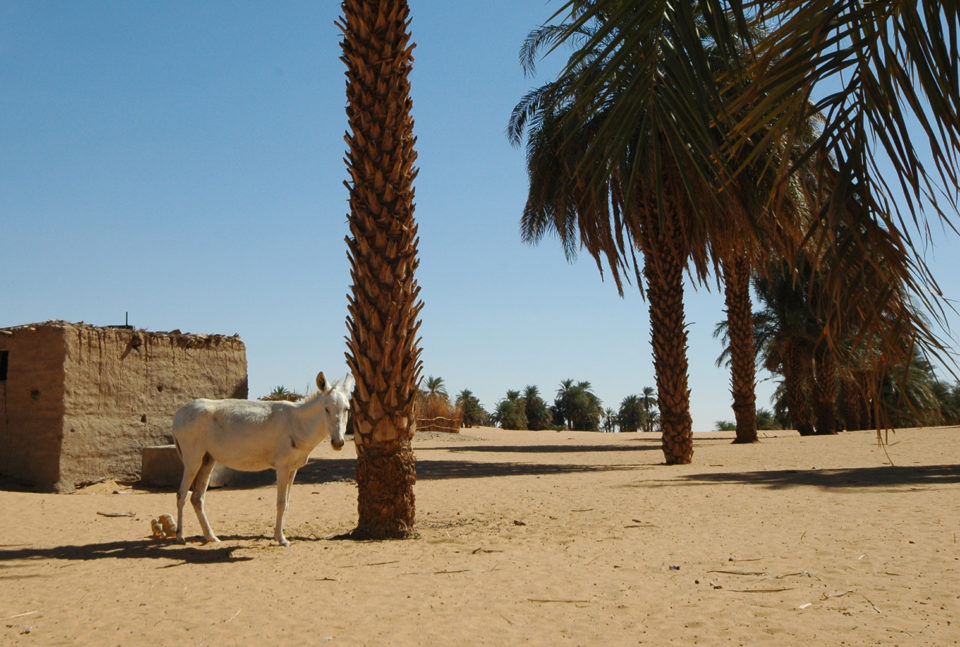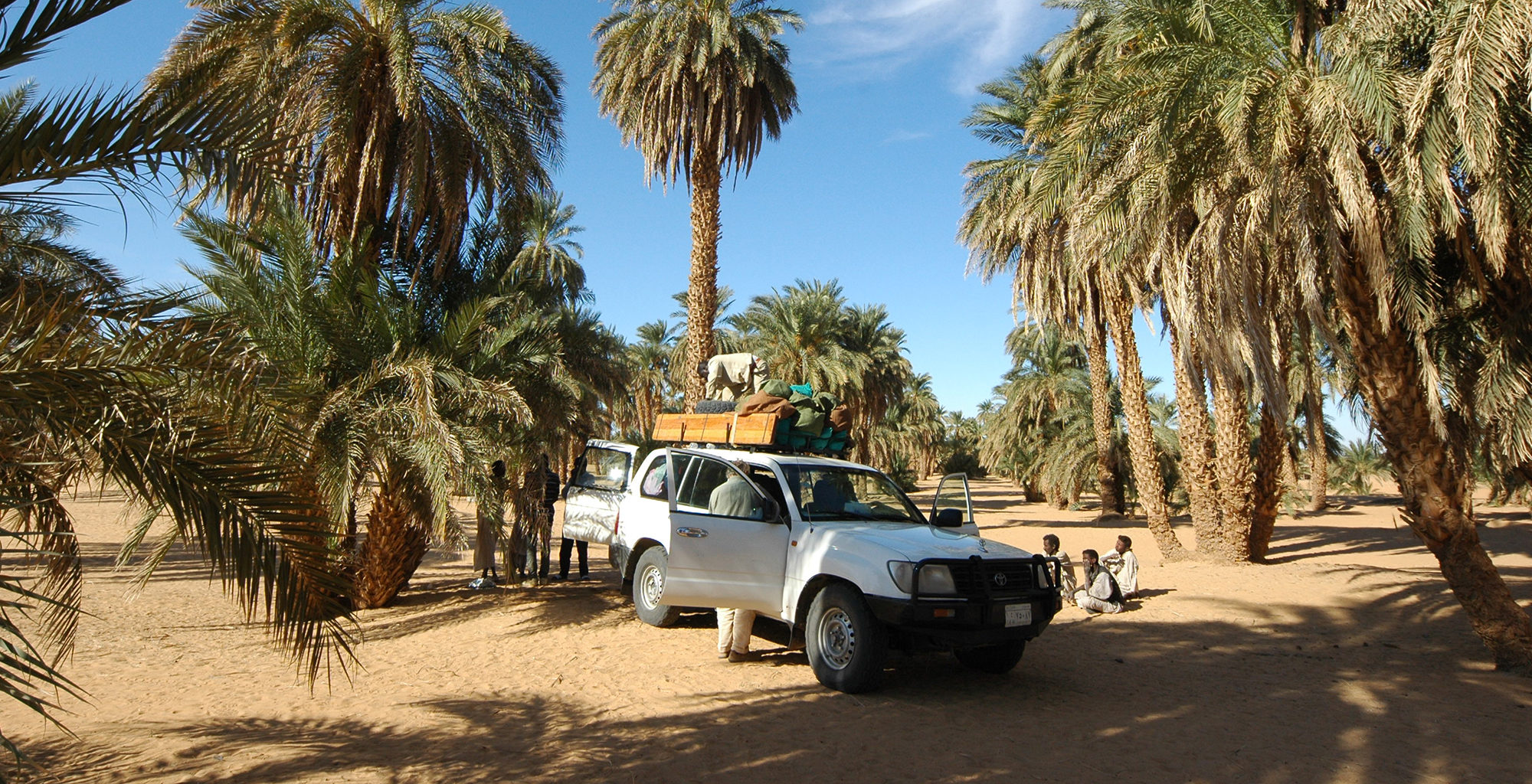The first Nubian kingdom, known to the Egyptians as Kush, was centered on Kerma. It emerged as Egyptian power waned, when they were preoccupied with an invasion by the Hyksos around 2,100 BC. An indigenous culture developed, eventually extending into Egypt as far as Aswan.
When Egyptian power recovered in the 15th century Thutmose I sacked Kerma and Nubia’s first independent kingdom came to an end.
Kerma today is a settlement of relatively prosperous smallholder farms and date palms stretching for kilometres along the riverbank. It seems that the population is falling as the young move to the urban areas.
The kings of Kerma were powerful enough to organise the labour for monumental walls and structures, two of the most impressive of which can be seen today 3,500 years later. These are two huge Deffufas, a Nubian term meaning a mud-brick building, built during the earliest period of the kingdom.
The Western Duffufa is possibly the oldest and certainly the largest man-made structure in sub-Saharan Africa. The Eastern Duffufa is surrounded by the graves of Kerma’s kings, one of which contained over 300 sacrificial victims – royal bodyguards, servants wives and children – accompanying the king to the afterlife.
Please note that we currently use Kerma Wild Camping for accommodation in this area.


